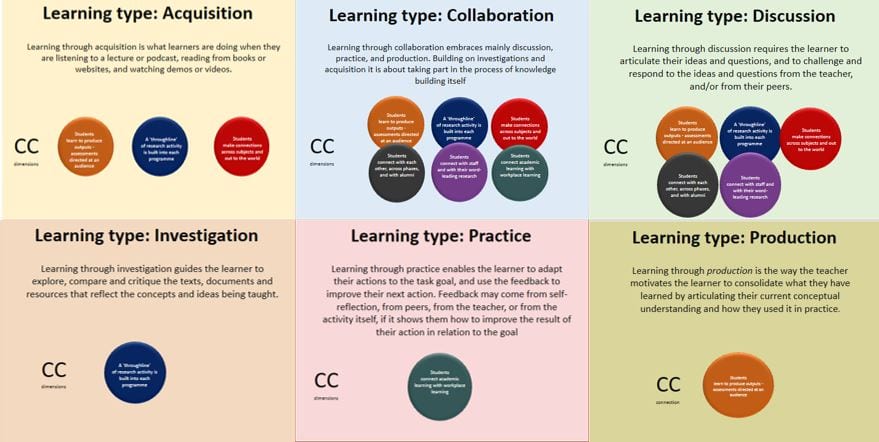How to teach online [Week 2/3]
Before jumping straight into planning and implementing teaching, there are some things you should know...
![How to teach online [Week 2/3]](https://images.unsplash.com/photo-1501504905252-473c47e087f8?crop=entropy&cs=tinysrgb&fit=max&fm=jpg&ixid=MXwxMTc3M3wwfDF8c2VhcmNofDExfHx8ZW58MHx8fA&ixlib=rb-1.2.1&q=80&w=2000)
Week 2 started with a quick check up on us as learners on how we are feeling and doing. With this modeled to us on the platform, the course again reiterated on ensuring our emotional readiness before they begin our learning for the week.
Supporting students' learning.
Continuing on the theme of "be present", the course reminded and emphasised on the importance of building rapport with our learners, and ensuring they feel safe by just talking out their fears and anxieties.
Then the course talks about the true need for synchronous online learning, that it is not really true... Being on the same (video) call to learn simultaneously takes a toll on both educator and learner. A lot of orchestration is actually required to get everyone online at the same time, including managing our learners and their time (as well as ours), access to device and connection, tech skills, etc... And the call can be draining. So they recommended us to change our perspective and assume synchronous learning is scarce. How will we then adjust our teaching & learning? Grid it out - matrix the learning activities we have planned out against the need to make it synchronous or not, must it be done online or not. We may come to realise that asynchronous learning may be a better choice for many (even for ourselves) as everyone can go at their own (controlled) pace and reduces the overall stress of learning (on top of dealing with all the chaos inside and outside our homes now).
Is a video call with the whole class at the same time really necessary? Really?
To ensure we can support our learners well, expectations must be managed well. A few key elements were mentioned: 1) Design or co-design a study plan (what is being taught when, and what is being expected from our learners by when). Self-regulation and independent learning will be some crucial skills our learners need to pick up as well, and actually, these are basic life skills they should have anyway. 2) Provide an interaction schedule. Set time for when we can be contacted (our "office hours"). This will not only enable students to understand boundaries, but also could be used to provide us more time to follow up on learners or tasks we may have overlooked or put aside. 3) Give explicit and concise instructions. With that said, do still check and make time to clarify the understanding on what is expected after giving your instructions or messages. Even in adulthood, we know instructions can still be misinterpreted, what more our young learners.
For any sense check (or when all seems bleak), we should remember to reach out to our peers for feedback or ideas (or even just to say hi and rant), even ones who may not be educators, cos why not?!
Most importantly, be mindful of our learners' environment.

To begin supporting our learners, sometimes, it is not even about starting our learning activity. Most times, it is actually checking on all the pre-requisites before learning can begin. All times, it is about being aware and understand who they are as a person. We should start by making sure they are okay physically and emotionally. 1) Get to know their spaces - no pictures are needed, but you can still find out if they even have a desk or seat for learning, or perhaps even a quiet space/room. Many may have lost the privilege of having a dedicated desk and seat for learning like what they have in school, more so a device to connect with us online. 2) Get to know their time - do they have other responsibilities when they are at home? When will they have time for themselves or for learning? 3) Get to know their support system - who can help them with homework? Who can you reach out to if you cannot connect with your learner themselves? Being aware of all these circumstances surrounding our learners will enable us to plan around and plan ahead.
We may not be able to resolve all their issues, but knowing and understanding our learners is the first step to supporting them and their learning.
We were also equipped with a few more thinking points as we are crafting and orchestrating learning without being in a physical classroom or school. There were a few guiding principles given to us but these were my take on them:
- Hope for the best and expect the worst: Plan for asynchronous learning
- Gradually release learning responsibilities to our learners
- Account and design for different learning types.
What learning types, you asked?
Learning types here was intended to prompt us into thinking about the type of learning we want our students to engage in and achieve. Here, there were 6 learning types that were mentioned (based off the Conversational Framework from Professor Diana Laurillard): Acquisition, Collaboration, Discussion, Investigation, Practice, and Production (brief intro to them here: https://abc-ld.org/6-learning-types/ ). Would you like your learners to read, listen, watch, or perhaps work together on a project, discuss and learn through conversations, explore an event, doing something, or perhaps create an output to prove their learning. As we are designing the learning towards an objective or chunked learning outcomes, these are the type of engagement that can be incorporated into the lessons.
"So, how would you like to learn tomorrow?", asked the teacher.

Design for support, Design to challenge, Design to offer choices
i) Scaffold and chunk out the lessons towards an ultimate learning outcome. Once in chunks, consider if parts can be handed over to the learners first or if more support is needed to build up prior knowledge before they can engage in the one to be completed in the current lesson. ii) Make sure they know where to go for support as well. For deeper learning or perhaps to just trigger curiosity, an extension to the lesson was also mentioned. Sounds like we were encouraged to write "cliffhangers" in our lesson to prompt our learners to think further about the topic taught. iii) Then, ensure there are alternative ways for our learners to showcase their learning. This will not only promote learning autonomy and independence to the students, but hopefully also increases the sense of commitment in them too. This reminds me of the phrase "How are you intelligent?" from one of Sir Ken Robinson's book.
Rather than be teacher of all lessons but master of none, why not try teacher of all lessons and master of some? Have fun with the ones you enjoy most!

Feedback is a gift
Elicit feedback for ourselves and for our learners. I just needed to remind myself that this is not a new thing I have implement, as this is just part of the plan-do-reflect practice actually. Ultimately, what we want is to be able to identify areas of strength and weakness, so that we can improve on the learning experience for our learners and also ourselves. These were some of the categories of feedback we were given to think about and try: Pastoral, Iteration, Support, Technical, Progress, Planning, Wellbeing, Physical, Institutional. That's anything from "How are you?" or "What is the one thing you'd like me to try changing to help you learn better?" to "Are you struggling with the current topic?" to "Is there anything that the school can help you with (e.g. need device, need stationaries, etc...). Use these input to find trends or themes and then iterate on the learning designs. Start small, take it slow enough, and always remind ourselves to pick our battles.
There ain't fixes to all problems at once. Be honest and be kind to yourself. Pick your battles.
In a nutshell, teaching and learning is an iterative process. Plan it, try it, have fun with it, learn from it, and do better next time (unless you are already perfect). =P Do unto yourself what you would do unto your learners.
Check out the course (#notasponsor) in the link below if you'd like to learn about how to teach online firsthand.


